Kraków 2023-11-04
Kraków Grzegórzki passenger stop.
Geographic coordinates: 50.057N 19.947E. Elevation 204 m.
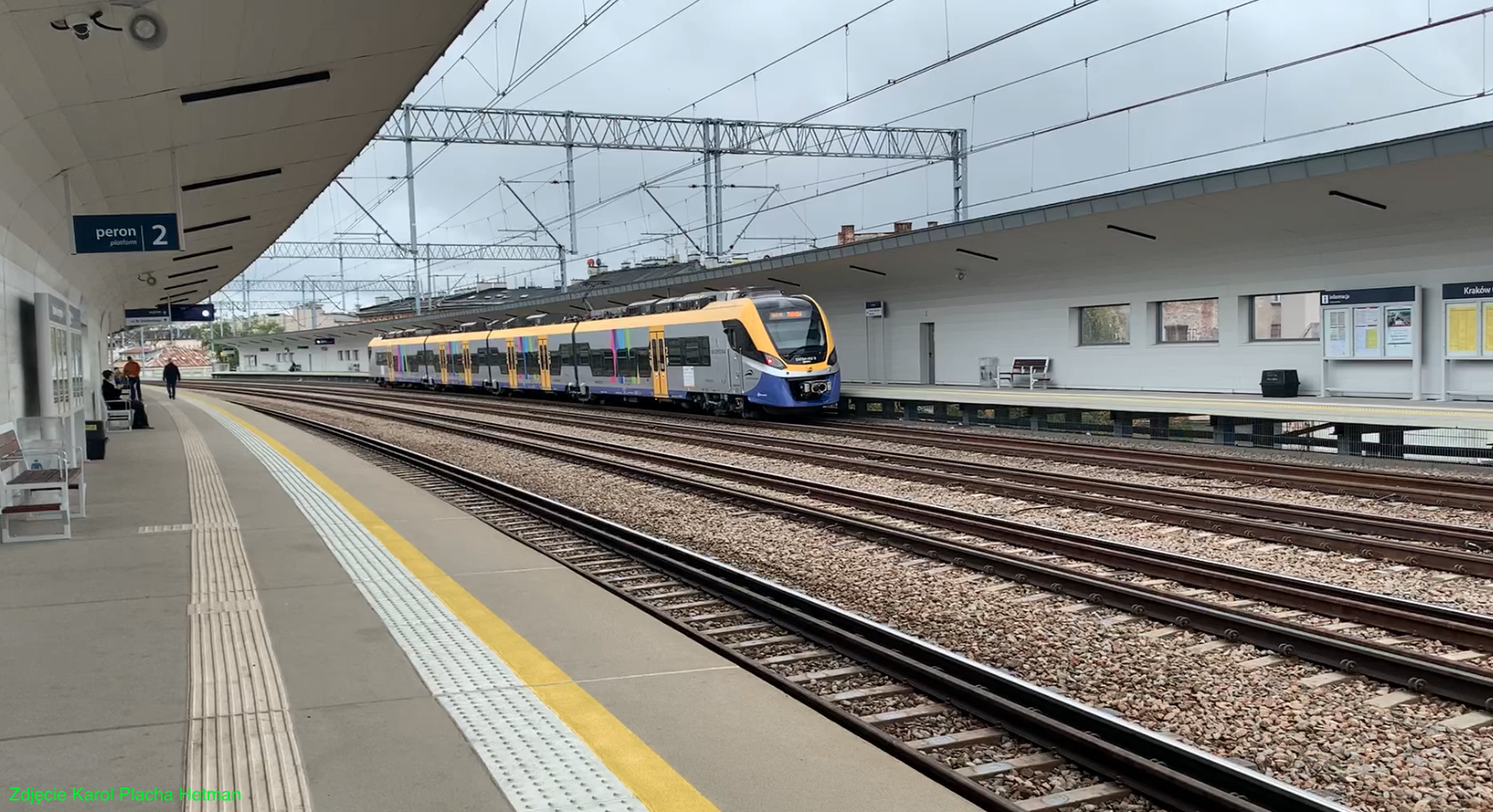
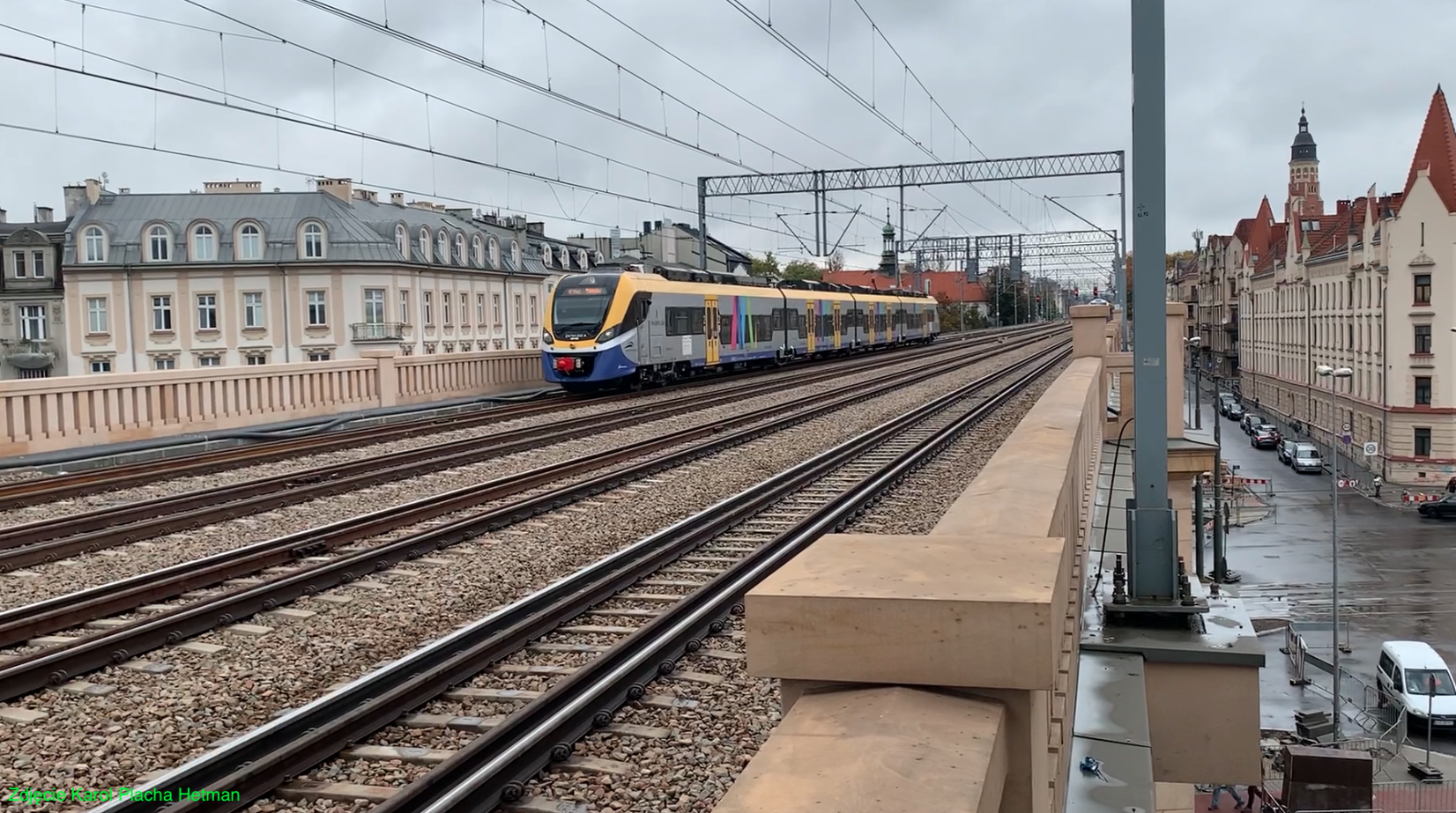
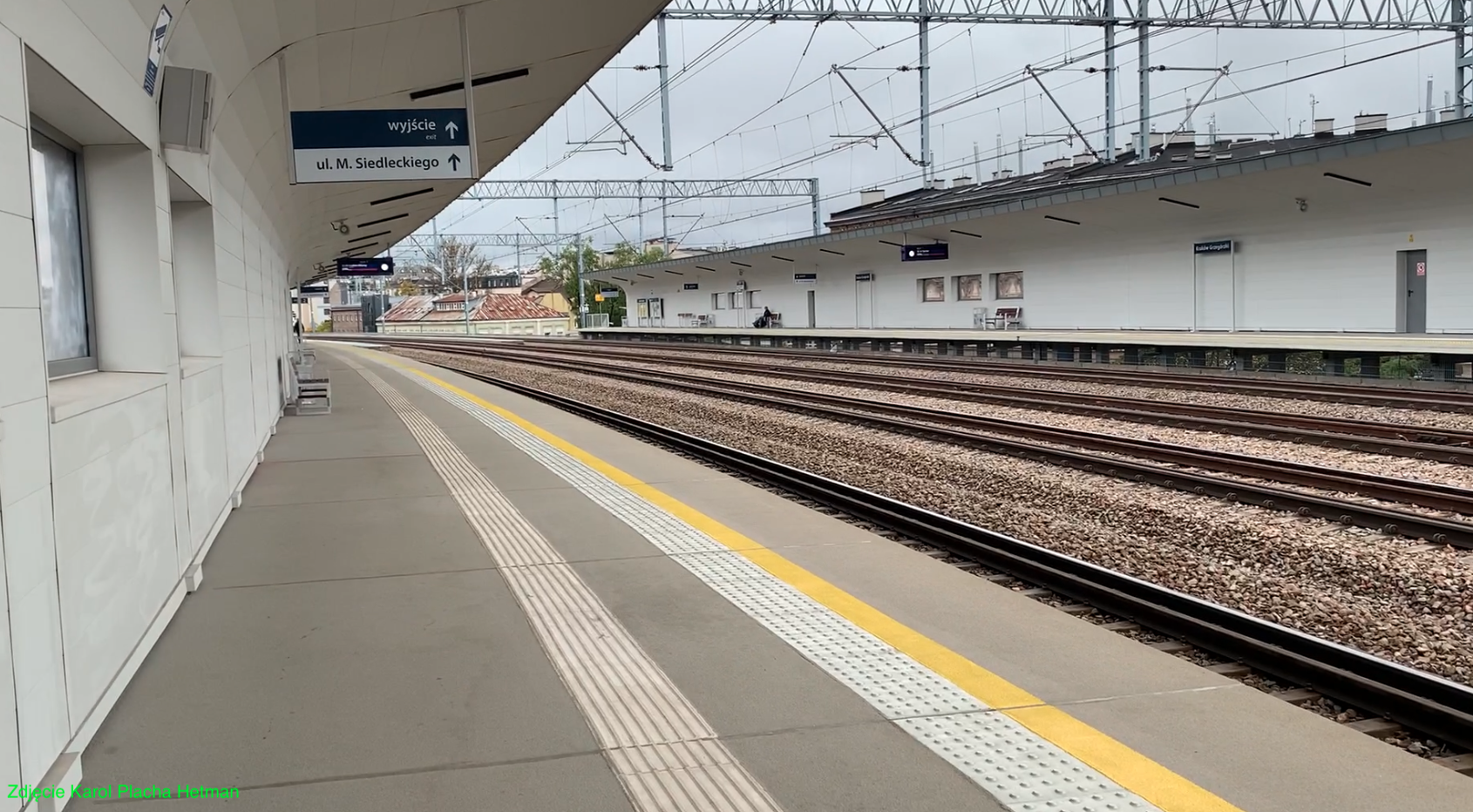
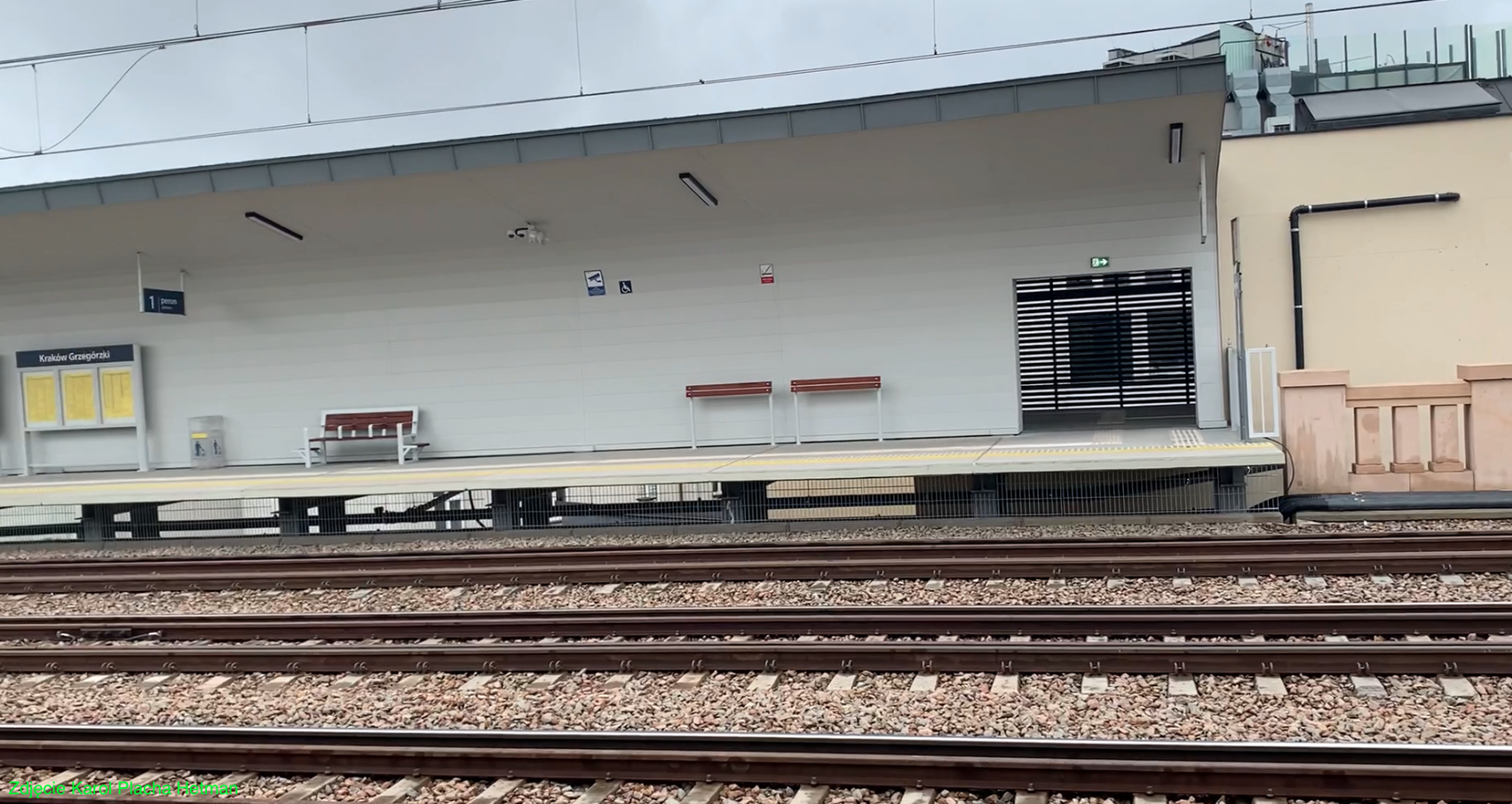
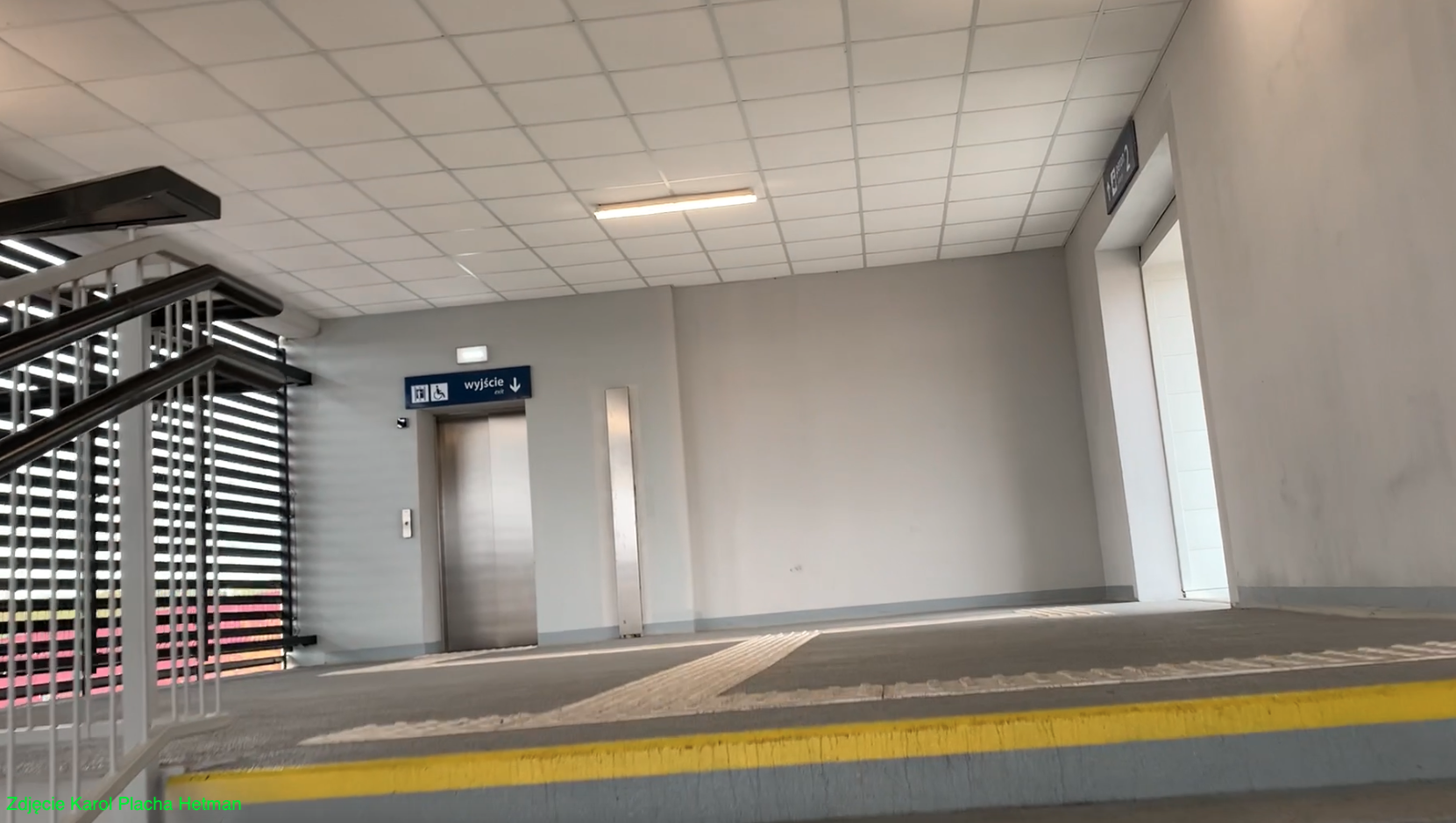
On September 3, 2023, the next railway stop in Krakow was opened, which facilitates communication for residents and people from outside Krakow commuting to schools and workplaces. The stop was named Kraków Grzegórzki. Grzegórzki is currently a district in Krakow. In 1910, the village of Grzegórzki was incorporated into the city limits. At that time, the village of Grzegórzki was separated from Kraków by the Stara Wisła river. Grzegórzki is located only 1 km south-east of the center.
The village of Grzegórzki was founded in the 14th century and belonged to the nobility. In 1388, the village was bought by the city of Kraków. For many centuries, Grzegórzki was a food source for Krakow. There were slaughterhouses, butcheries, bakeries and breweries here. In 1858, the Austrians built a defensive bastion here. But already in 1860, due to poor workmanship and muddy ground, the entire bastion collapsed into the Vistula. At the turn of the 19th and 20th centuries, there was an increase in industrialization in Grzegórzki. Then many new industrial plants and craft workshops were established, for example; Marcin Peterseim's agricultural machinery and equipment factory, Edmund Zieleniewski moved part of his factory from Krowoderska Street in 1906 (C.K. Privileged Fabryka Maszyn L. Zieleniewski Towarzystwo Akcyjne). The following operated in Grzegórzki: S. Burzyński's sawmill, R. Muranyi's Woodwork Factory, Steam Furniture Factory, J. Pacanowski's Paper Products Factory, J. Orlicki's Auto Body and Carriage Factory, Polish-Swiss Chocolate Factory "Suchard", Polskie Zakłady Gumowe "Semperit" , gasworks and power plant. The center of small trade was the Market Hall and the shopping square next to it. Currently 2023, the Market Hall and the "Unitarg" Market Square. The hall was moved from Podgórze, Celna Street. At 16 Grzegórzecka Street, in the period 1893–1896, the building of the Collegium Medicum of the Jagiellonian University was built, designed in an eclectic style. Nearby, the building of the Urological Clinic and the Medical Students' House were built. All in the back of the hospitals on Kopernika Street. Galeria Kazimierz was established in March 2005 in the place of the former municipal slaughterhouse. In place of the Zieleniewski-Szatkowski factory "Zakłady Budowy Maszyn i Aparatury named after Ludwik Zieleniewski", the Wiślane Tarasy apartment buildings were built.
Railway in Grzegórzki.
In 1863, a railway bridge was built over the Stara Wisła River, which has now (2023) been renovated and runs over Grzegórzecka Street. It was and is an important railway route Kraków - Przemyśl.
There is a wide green belt along Podgórska Street, where the Grzegórzki railway station was located. It was the beginning of a standard-gauge single railway line to Kocmyrzów and Mogila. There were sidings of numerous industrial plants here. Among other things, hard coal was supplied from this Grzegórzki station to the Dajwór power plant. The station was also connected to the tracks of the Kraków Główny - Kraków Płaszów (Podgórze) railway line, towards the center of Kraków. On the other side of the Vistula there was the Wisła railway station. In Kocmyrzów there was a station on the border of the partitions, where goods were reloaded onto wagons of the Russian narrow-gauge railway.
Kraków Grzegórzki passenger stop.
This is one of many new railway stops built in Małopolska, which eliminate the transport exclusion imposed on Poles by the Freemasons. The stop opened on September 3, 2023. The stop is located next to the Market Hall. It provides good access to schools at Grzegórzecka Street and Kopernika Street. It is also a good transfer point towards Nowa Huta (east) or towards Ludwinów and Podgórze (south-west). Over 120 SKM Koleje Małopolskie trains stop at the stop per day.
There is some difficulty for passengers who use the SKA3 line, i.e. from the direction of Tarnów. These trains run on middle tracks, through the Grzegórzki stop, which do not have platforms. Therefore, SKA3 trains cannot stop in Grzegórzki. Of course, Freemasonry raised a cry, having no idea about the organization of the railway network. If passengers want the Grzegórzki stop, they get off at the Zabłocie stop and board another train within a few minutes, without even changing the platform, just the platform edge. It should be remembered that the Grzegórzki stop appeared last in the plans and serves the SKA1 and SKA2 routes.
The stop was built on a new flyover. Its two single-edge platforms were built on pillars. The platforms are 200 m long and are surrounded by a wall and a roof facing the city. The platforms are equipped with staircases and elevators. The exits from the stop are located on both Grzegórzecka Street and Berka Joselewicza Street. Full roofing, LED lighting and dynamic information boards were installed on the platforms. The surface of the platforms is anti-slip. It is equipped with guide lines, a yellow warning line and buttons.
The construction of the Kraków Grzegórzki stop was carried out as part of a large project worth PLN 1.2 billion, consisting in the addition of a second pair of tracks on the E30 railway line on the Kraków Główny Towarowy - Kraków Płaszów section. There are three tracks on the Kraków Płaszów - Kraków Bieżanów section. Let us remind you that after 6 years, on June 9, 2023, all four tracks were launched. For the purposes of laying additional tracks, the investment included, among others: railway overpasses (replaced embankments) 700 meters long, between Miodowa Street and Kopernika Street, and the historic railway viaduct (initially a bridge) over Grzegórzecka Street was expanded.
Written by Karol Placha Hetman
